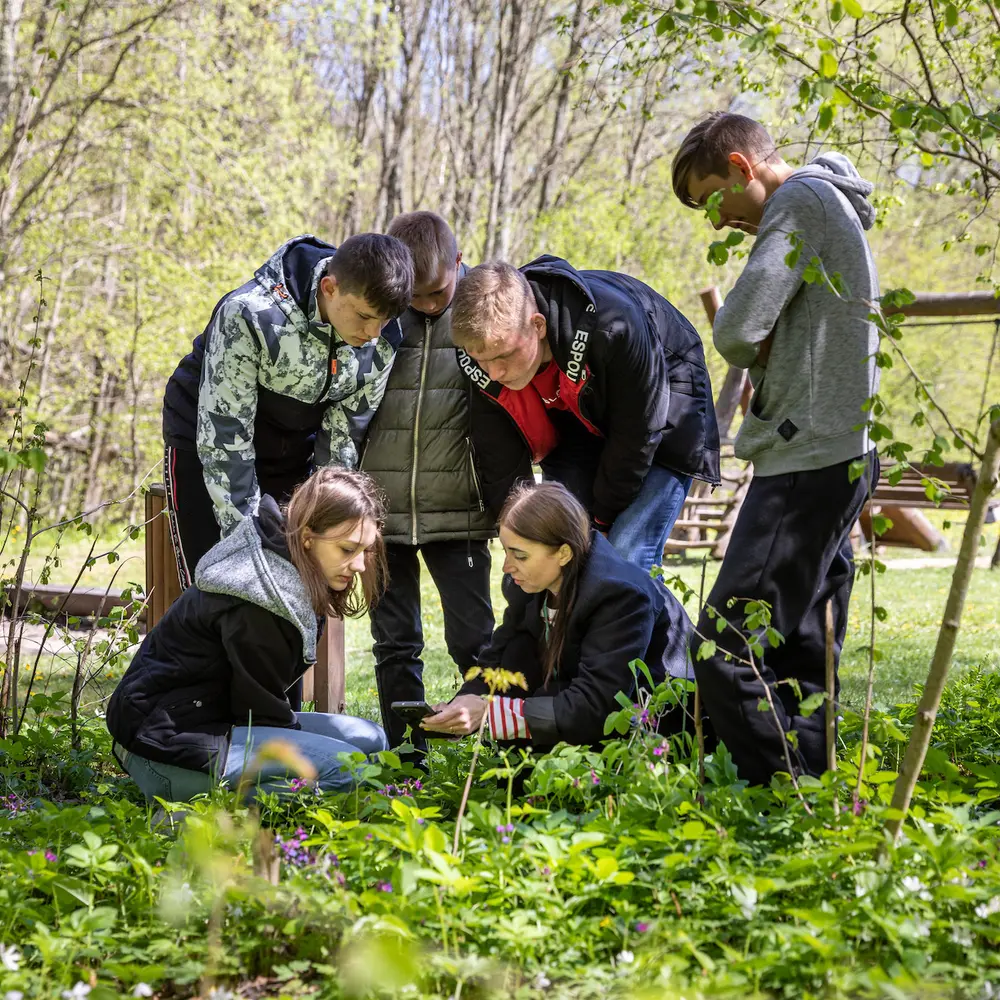Jennifer Jukanovich and Russell West, two coaches from our Board Leadership & Development program, have written a book called The Culturally Conscious Board: Setting the Boardroom Table for Impact, available for pre-order now. Read why Kimberly Thornbury, Vice President for Nonprofit Leadership & Development and lead for our Board Leadership & Development program, finds this book valuable for boards, then keep scrolling for an interview with the authors themselves.

At the Murdock Trust, we work with hundreds of nonprofits each year through grantmaking, programming, convenings, and more. We have seen, and research shows, that strong nonprofits are led by strong boards. However, even the strongest of boards are made up of humans – with differing opinions, busy people, and conversations characterized by radical candor. It is in these different perspectives and social dynamics that boards have the potential to govern well for the sake of the nonprofit’s mission. It’s precisely about this piece – board culture – that Russell West and Jennifer Jukanovich have written a book.
Jennifer and Russell have been coaches in our Board Leadership & Development program for years. I have personally witnessed them hold an entire conference room full of board leaders, board members, and executive directors captive with a vision for board culture that begins from a place of hospitality, trust, and humility. This book is derived from the conversations hosted in that program. In a moment where “culture” is a term that is both idealized and weaponized, these two brilliant coaching professionals have written a book about culture as a way to welcome diverse voices in and create more efficient, effective decision-makers. I have seen their teaching wholeheartedly embraced by nonprofit boards across sectors, states, and ideological lines.
Starting September 3, this conversation can be part of your board’s story too. I can assure you that if you genuinely engage with the questions presented by the board coaches in this book, your board, and therefore those you seek to serve, will be strengthened and empowered.
-Kimberly Thornbury, Vice President, Nonprofit Leadership & Development
AN INTERVIEW WITH THE AUTHORS
We sat down with Jennifer and Russell to discuss how this book came about, who it’s for, and what they hope the impact will be. This interview has been lightly edited for length and clarity.
How did this book come about?
Russell: Jennifer and I had just come off the stage teaching the Culture section of the Board Leadership & Development curriculum at the Hilton. It was a section we had been asked to revise about three years prior, and each year we put a little more polish and refinement into the session. But at that particular session, a lot had come together. People in the room were talking about the tools we had created and how they might influence some of the top priorities as they were making an exit plan from the training.
Jennifer: And Kimberly Thornbury stopped us in the hallway afterward and said, “I think there’s a book in this!” She encouraged us that more people need to be aware of this approach, which really was using the literal and metaphorical table that board members gather around as an invitation to hospitality.
Who is this book for?
Jennifer: We feel it is focused on those in the nonprofit sector who are working in the social transformation space. Because we are introducing a new board member through our business fable – her name is Crystal – it’s also a great tool to give someone who is a new board member or to have as part of your orientation.
Russell: We think all boards have a culture. But all boards are not conscious of what that culture is and how it may be unfolding before their eyes. In some sense, this book is for all boards. It is specifically for boards prepared to go on a journey of making what is unmentionable, mentionable, so that the decisions they make are of the best quality in service to their mission.
We think this book highlights a transformational moment when something appears to be on the table but others sense it is not. This moment occurs when someone courageously shows the kind of verbal stewardship that takes something seemingly off the table – something undiscussable, unmentionable, therefore unmanageable – and puts it squarely on the table. Culturally conscious boards practice calling things by their rightful names.
Tell us more about Crystal, the new board member you introduce in this book. Why was it important to include a narrative?
Russell: In the polarized moment we are in, anyone who comes out of the gate prescribing solutions has already gotten themselves immersed in a fight. We didn’t want that. So we took a metaphorical approach, as a table and invitations go hand in hand. We meet Crystal in her first moments in a board meeting, seated at a boardroom table. We asked ourselves what would invite readers to open the book and think to themselves, “This is a gift.” We thought a story about an unfamiliar table was the way, as we have all been to tables where in the beginning it was unclear what the rules were, whether we belonged or had made the right choice by coming.
So this relatable character named Crystal emerged, a character who wants to go back to her neighborhood now that she’s become an adult, keeping a promise she made to herself to one day to give back. And we meet her on the first night of keeping that promise: her first board meeting.
Jennifer: As we got to know Crystal, we realized there were other board members we needed to get to know, too: Philip and Michael and some board members who aren’t very present. Our hope is the reader will find themselves in one of the characters. It’s kind of like holding a mirror up to yourself, “Oh, I could see myself doing that in a board meeting.” Or, “Maybe I silenced someone in that way.” Or, “Was I able to use my voice?”
How will this book equip boards practically?
Jennifer: In addition to Crystal’s story, we’ve also offered what we hope will be a very practical tool for boards in leading them through conversations. Consistent with the theme of hospitality and the table, we’ve named this tool the Board Culture Placemat. It is an assessment of true/false statements around Identity, Intention, Invitation, Investment, and Impact. Our hope is this very simple tool will be a conversation catalyst for a board to name what may be currently off the table, and hopefully capture their culture as an asset, and not a liability, to their decision-making.
Russell: At the end of each chapter are questions that we hope also serve as catalysts for deeper discovery. A question is actually a statement of trust to the person being asked. If it’s put before the person confidently, it says, “We have confidence in you. If you reflect on these things, we believe there is an answer within you that’s equal to the problem you are facing on your board.”
What do you hope this book accomplishes for the boards that read it?
Russ: An organization’s mission is voiceless unless someone insists on its recognition in the choices its leaders must make. If a nonprofit’s mission gets a voice because courageous board members speak at the appropriate times on behalf of the mission, our box is checked. That one action is like a spark that sets a chain reaction in motion that will work its way through strategies, budgets, personnel selections, policy guidelines, and actions out in the field. Because of that, a child will be fed, and will be fed the right things, and at the right times and the right amounts. A single mom will find belonging in a community because these policies have worked their way out into communities in such a way that people who are often on the margins and invisible, they’ll be seen. A job training program will become the lifeline to veteran whose traumas have narrowed the hiring options.
We believe that if this book can get into the hands of those who see themselves as transformational agents, not only will this book hit its mark but that organization they serve will have a better chance of hitting its mark.








